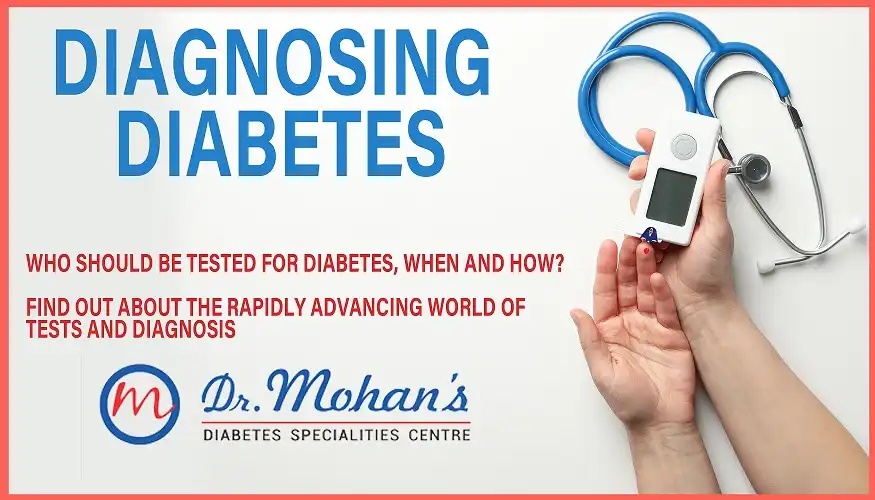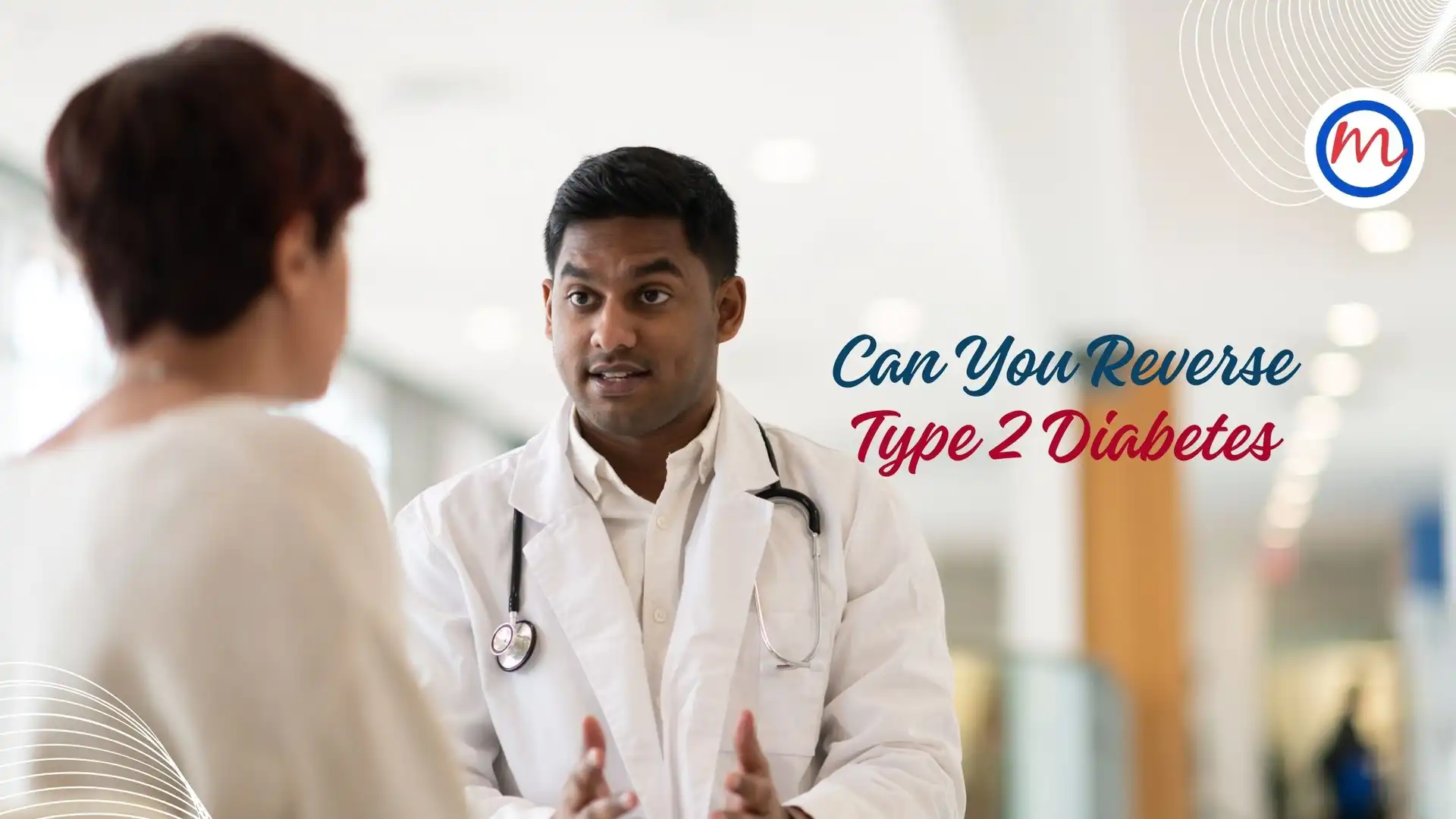Who should be tested for diabetes, when and how? Find out about the rapidly advancing world of tests and diagnosis
Let’s begin with a caveat: the Internet is buzzing with theories and advice on diabetes. We would, however, request you not to try and diagnose yourself, if you think you might have diabetes. Only a doctor can diagnose diabetes.
Here we are offering you some idea of the tests and diagnosis involved in diabetes treatment, to help you decode the medical jargon in a way that you will understand. Remember, tests allow doctors to detect diabetes and prediabetes sooner and prevent complications.
Who should get tested?
To begin with, those who show symptoms of diabetes (to read about signs and symptoms in detail click here). And also those who may not show symptoms but are overweight or obese (a body mass index ≥25 kg/m2) and have any of the following other risk factors for diabetes. Some people need to be extra careful: older age, family history, the overweight (especially, around the belly), the unhealthy eaters, the couch-potatoes and those who have had diabetes during pregnancy.
Adults with symptoms
It can be challenging to recognize the symptoms of type 2 diabetes. People often discover that they have elevated blood sugar during routine checkups with a doctor. If you experience one or more of the following symptoms, you should speak with your doctor.
- Constant fatigue
- Excessive thirst
- Excessive hunger
- Frequent urination
- Constant hunger
- Unexplained weight loss
- Vision problems
- A dry mouth
- Irritability, mood swings and depression
- Slow wound healing
- Tingling and numbness
- Skin changes and infections
- An itching sensation
- A weak handgrip
- Erectile dysfunction
Adults without symptoms
Testing should begin at around age 45 and regularly after that (at least, every three years).
- A parent or sibling with diabetes
- A history of heart disease
- A lifestyle of physical inactivity
- A poor level of the “good cholesterol” (HDL under 40)
- A high level of blood fats, triglyceride (≥250 mg/dL), one of the signs of metabolic syndrome
- High blood pressure (hypertension)
- Impaired glucose tolerance or impaired fasting glucose (also known a pre-diabetes) on previous blood-glucose testing
- For women, having gestational diabetes during pregnancy or giving birth to a baby that weighed more than nine pounds
- For women, presence of Polycystic Ovarian Syndrome (PCOS)

In pregnant women
Called gestational diabetes, it is a condition diagnosed for the first time during pregnancy (gestation) when your blood sugar levels become high. More common in the second or third trimester, it usually disappears after giving birth. Gestational diabetes can affect your pregnancy and your baby’s health. The risks can be reduced if the condition is detected early and well managed. The symptoms are:
- Extreme fatigue and lethargy
- Urge to urinate increases to extremes
- Extremely dry mouth and constant thirst
- Feeling extreme nausea after eating
- Unusually strong cravings for sweet foods and drinks
- Blurred vision
- Tingling in hands or feet
In children and adolescents
Most often, doctors diagnose type 1 diabetes in children and young adults. Type 2 diabetes usually develops in adults, but children can also develop type 2. Experts recommend testing children between age 10 and 18, who are overweight or obese, and have at least two other risk factors for developing diabetes:
- Family history of type 2 diabetes in closest kins
- Signs of prediabetes
- Mother who had diabetes while pregnant with them
- Low birth weight (less than 6 pounds)
- Any risk factor mentioned in type 2 diabetes
What tests are used to diagnose diabetes and prediabetes?
The main diagnostic tests include (1) fasting blood glucose; (2) random blood glucose; (3) glycosylated hemoglobin (HbA1c); and (4) the oral glucose tolerance test (OGTT). Each test has benefits and disadvantages, although HbA1c is now widely accepted for diagnosis.
The HbA1C test
Also called A1C test, haemoglobin A1C, HbA1C, glycated hemoglobin and glycosylated hemoglobin test, it is a blood test that provides the average levels of blood glucose over the past three months. Generally, an HbA1c of 6.5—7 percent indicates diabetes. The higher the percentage, the higher your average blood glucose levels. An A1C somewhere around 5.7 and 6.4 percent indicates prediabetes, while below 5.7 is seen as normal.
HbA1c is rapidly becoming the test of choice, as no fasting is required and a longer-term stability of blood glucose levels can be obtained. The American Diabetes Association recommends that the test may be used as a substitute to fasting blood glucose for diagnosing diabetes. Yet, in the context of Indians, there are some ifs and buts with A1c tests.
There is some evidence that anaemia—especially, iron deficiency anaemias—may affect HbA1c result. A false low A1c result may be seen in people with anaemia or heavy bleeding, while a false high in people with iron deficiency anaemia. When it comes to A1c to diagnose diabetes, your doctor will consider factors such as your age, whether you have anaemia or other problems with your blood.
Random blood glucose test
RPG is affordable, convenient (no fasting) and you may have RBG test at any time. If your diabetes symptoms are clearly present and your doctor does not want to wait until you have fasted, the RPG test is used to diagnose diabetes. It is not recommended as a single diagnostic test unless typical symptoms of diabetes are present.
Fasting blood glucose test
In this test, your blood sample will be drawn after you have observed an overnight fast (fasting means, having nothing to eat or drink except sips of water.) For the most reliable results, it is best to have this test in the morning, after you fast for at least eight hours. A fasting blood sugar level less than 100 mg/dL (5.6 mmol/L) is normal. A fasting blood sugar level from 100 to 125 mg/dL (5.6 to 6.9 mmol/L) is considered prediabetes. If it is 126 mg/dL (7 mmol/L) or higher on two separate tests, you have diabetes.
Post Prandial Glucose Test
PPBS is a blood glucose test that measures glucose levels in the blood after a meal. Ordinarily, blood glucose levels rise after eating a meal. A 2-hour PPBS test measures blood glucose precisely 2 hours in the wake of eating a meal. By this point, glucose generally retreats down in healthy individuals. In people with diabetes, it will be raised. The test shows if an individual has diabetes, or is effectively controlling their blood glucose levels.
Oral glucose tolerance test
OGTT has been widely used as one of the standard diagnostic methods. It is used commonly for diagnosing gestational diabetes when blood will be drawn every hour for 2 to 3 hours. High blood glucose levels at any two or more blood test times will mean you have gestational diabetes. OGTT is also used to diagnose type 2 diabetes and prediabetes in general. However, OGTT is more expensive and cumbersome, as blood will be drawn 1 hour after you drink glucose and again after 2 hours.
Glucose challenge test
Pregnant women are asked to do tests on how well their body handles glucose: the oral glucose tolerance test, or the glucose challenge test, or both. The glucose challenge test (or the glucose screening test) is often done first. In this test, blood is drawn 1 hour after one drinks a liquid containing glucose. Fasting is not required. If the blood glucose is too high—135 to 140 or more—the doctor may ask for an oral glucose tolerance test.
Which test decides type of diabetes?
The tests described here can confirm if you have diabetes, but they can’t tell you what type of diabetes you have. Your doctor may look for certain autoantibodies (that mistakenly attack healthy tissues and cells) that are present in specific types of diabetes.
What the numbers tell
Each test to detect diabetes and prediabetes uses a different measurement. Your doctor may also use other test methods to confirm that you have diabetes.



